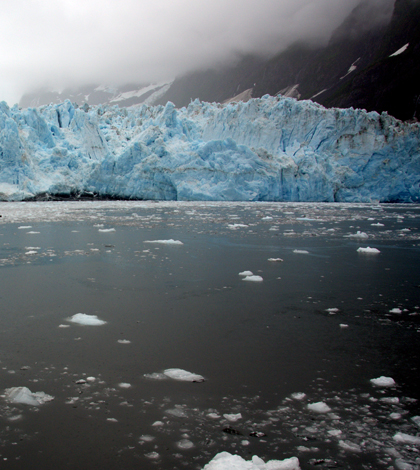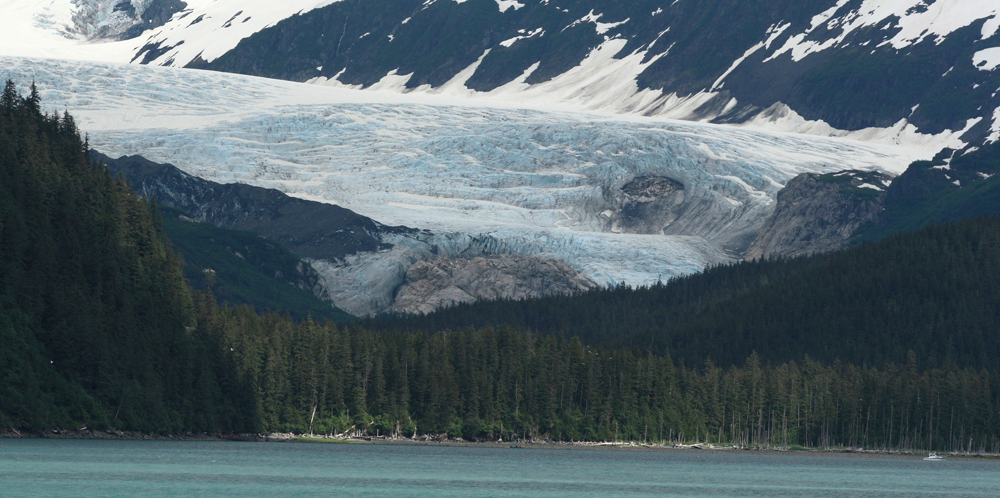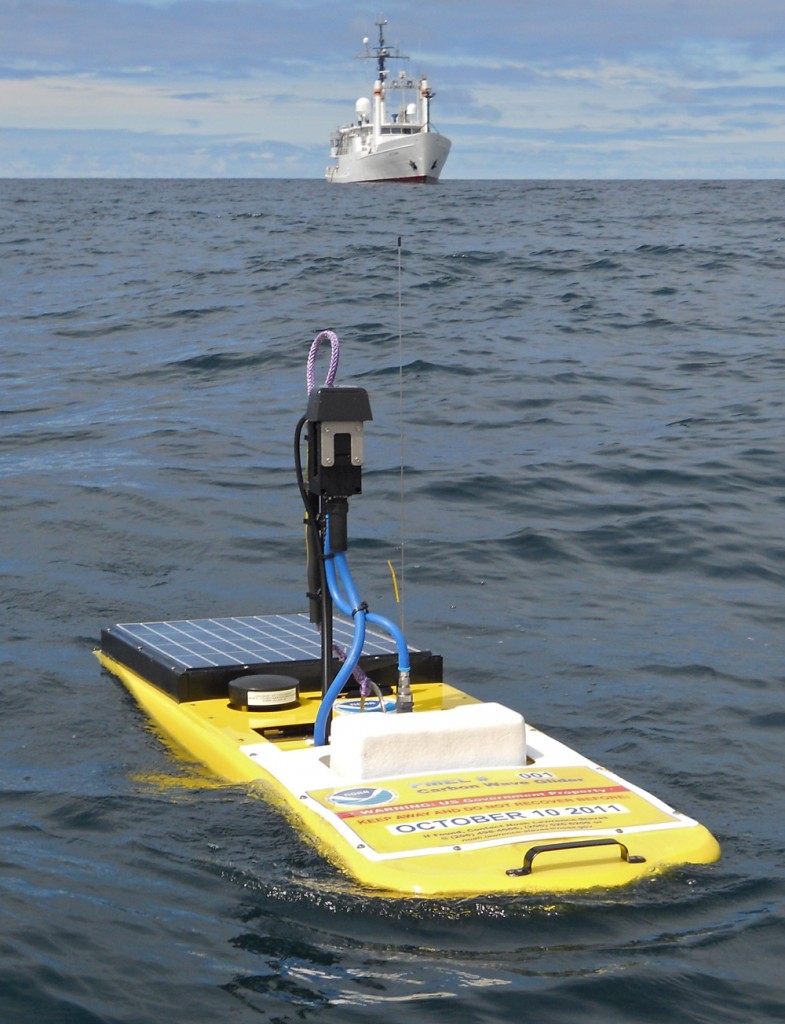In Prince William Sound, melting glaciers’ effects on acidification studied

A glacier in Prince William Sound (Credit: Maureen, via Flickr)
Prince William Sound in southern Alaska is infamous for the 1989 Exxon Valdez oil spill that loosed 10 million gallons and killed thousands of marine animals. Now the sound is the site of a study into a more subtle but wide-spread threat: ocean acidification.
This summer, a data collection campaign in Prince William Sound will give oceanographers a clearer picture of how ocean acidification’s effects may be made worse by the accelerated melting of surrounding glaciers.
“We’re really thinking about drivers in the environment now other than just CO2 that are contributing to ocean acidification or making the impacts worse,” said Jeremy Mathis, an oceanographer with the National Oceanic and Atmospheric Administration and leader on the project.
As atmospheric carbon dioxide levels climb, the ocean absorbs increasing amounts of the gas, which triggers reactions that make the water more acidic. It also reduces the amount of carbonate in the water, which stresses shell-building marine organisms that rely on the minerals.
If that weren’t bad enough for crabs and other shelled creatures, scientists think that greenhouse gas-related climate warming could be exacerbating the effects of ocean acidification. Glaciers are melting more quickly, sending an increasing amount carbonate-free meltwater into the ocean and further driving down concentrations of the minerals in some coastal regions.
One of those regions is Prince William Sound, an inlet on the Gulf of Alaska fed by runoff from more than a hundred glaciers. Over the next five months, Mathis and other scientists will oversee a fleet of sensor-toting unmanned vehicles as they make rounds in the sound and collected hundreds of thousands of measurements related to carbon chemistry.
“That is what will really fill in the picture for what’s going on,” Mathis said. “And how the water chemistry changes from right now, when there’s virtually no melt going on, into July and August when the melt is at its peak and there are millions of gallons of water that are just inundating Prince William Sound.”

Tebenkof Glacier in Prince William Sound is among the meltwater sources the study will capture (Credit: Frank Kovalchek, via Flickr)
Two Liquid Robotics Wave Gliders will maneuver within the sound, collecting surface measurements of pH, carbon dioxide, oxygen, temperature and salinity. A diving Slocum glider will collect profiles of pH, oxygen, temperature and salinity.
The scientists have also outfitted a glacier tour boat with sensors to measure a similar set of parameters in waters much closer to the glaciers than the gliders will ever explore.
“There was some concern about piloting the gliders into the coves where the glaciers are calving,” Mathis said. “We didn’t want the Wave Gliders to get crushed either in the ice field or by falling ice. By having the system on the ship it will give us another set of observations that we’re a little bit more comfortable with.”

A Wave Glider platform (Credit: NOAA)
The scientists will plug the data into algorithms they’ve created that reconstruct carbonate chemistry in the sound as the meltwater builds up over the summer and eventually flushes out into the Gulf of Alaska with the arrival of September storm systems.
Their findings will be applicable anywhere that large tidewater glaciers melt directly into the ocean, including other areas of the Alaskan coast, Greenland and Scandinavia. Prince William Sound just happened to be particularly well suited for the study because it’s water is relatively closed off from the larger Gulf.
“It serves as a really great constrained, fairly calm environment that we’re comfortable putting the platforms out in,” Mathis said. “It really represents a perfect natural laboratory.”
Top image: A glacier in Prince William Sound (Credit: Maureen, via Flickr)





0 comments